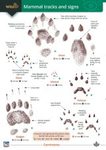![The Digestive System in Mammals The Digestive System in Mammals]()
Click to have a closer look
About this book
Contents
Customer reviews
Related titles
About this book
However well the anatomy of the gastro-intestinal tracts of a wide range of mammals is described and quantified, there can be no real explanation of observed patterns without consideration of the mechanical and chemical properties of the food consumed, and of the digestive stages involved in its processing. This book aims to integrate findings from the many different types of investigations of mammalian digestive systems into a coherent whole. Using the themes of food, form and function, researchers discuss models of digestive processes, linking this with evolutionary aspects of food utilisation. Macroscopic and ultrastructural studies of the gastro-intestinal tract are also presented, as are physiological, ecological and biochemical aspects of the digestion of different food types. The book ends with an integrative chapter, bringing together the themes running through the earlier sections.
Contents
Part I. Introduction: 1. Gut form and function D. J. Chivers and P. Langer; 2. Food and digestion of Caenozoic mammals in Europe P. Langer; 3. Modelling gut function C. Martinez del Rio, S. J. Cork and W. H. Karasov; 4. Optimum gut structure for specified diets R. McNeill Alexander; Part II. Food: 5. Foods and the digestive system C. M. Hladik and D. J. Chivers; 6. Classification of foods for comparative analysis of gastro-intestinal tracts P. Langer and D. J. Chivers; 7. The carnivorous herbivores R. J. Moir; 8. Nutritional ecology of fruit-eating and flower-visiting birds and bats C. Martinez del Rio; 9. Herbivory and niche partitioning M. R. Perrin; 10. Taste discrimination and diet differentiation among New World primates B. Simmen; 11. Potential hominid plant foods from woody species in semi-arid vs. sub-humid subtropical Africa C. R. Peters and E. M. O'Brien; Part III. Form: 12. The form of selected regions of the gastro-intestinal tract G. Bjornhag and P. Langer; 13. Categorisation of food items relevant to oral processing P. W. Lucas; 14. A direct method for measurement of gross surface area of mammalian gastro-intestinal tracts M. Young Owl; 15. Morphometric methods for determining surface enlargement at the microscopic level in the large intestine and their application R. L. Snipes; 16. Weaning time and bypass structures in fore-stomachs of Marsupalia and Eutheria P. Langer; 17. Adaptations in the large intestine allowing small animals to eat fibrous foods G. Bjornhag; Part IV. Function: 18. Foraging and digestion in herbivores G. O. Batzli and I. D. Hume; 19. Gut morphology, body size and digestive performance in rodents I. D. Hume; 20. The integrated processing response in herbivorous small mammals G. O. Batzli, A. D. Broussard and R. J. Oliver; 21. Digestive constraints on dietary scope in small and moderately-small mammals S. J. Cork; 22. Effects and costs of allelochemicals for mammalian herbivores W. J. Foley and C. McArthur; 23. Short-chain fatty acids as a physiological signal from gut microbes T. Sakata; Part V. Synthesis and Perspectives: 24. Food, form and function D. J. Chivers, P. Langer, C. Martinez del Rio, S. J. Cork, W. H. Karasov, R. McNeill Alexander, C. M. Hladik, R. J. Moir, M. R. Perrin, B. Simmen, C. R. Peters, E. M. O'Brien, G. Bjornhag, P. W. Lucas, M. Young Owl, R. L. Snipes, G. O. Batzli, I. D. Hume, A. D. Broussard, R. J. Oliver, W. J. Foley, C. McArthur and T. Sakata.
Customer Reviews
Edited By: DJ Chivers and P Langer
460 pages, 9 b/w photos, 79 figs, 37 tabs
'In conclusion, the book is well presented and scholarly. It is likely to be enjoyed on a first reading and used often thereafter, because of the wide range of information it presents.' The Queen's University of Belfast, Anatomy Journal

















![How to Find and Identify Mammals [Revised Edition]](http://mediacdn.nhbs.com/jackets/jackets_resizer_medium/21/210208.jpg?height=150&width=106)

















